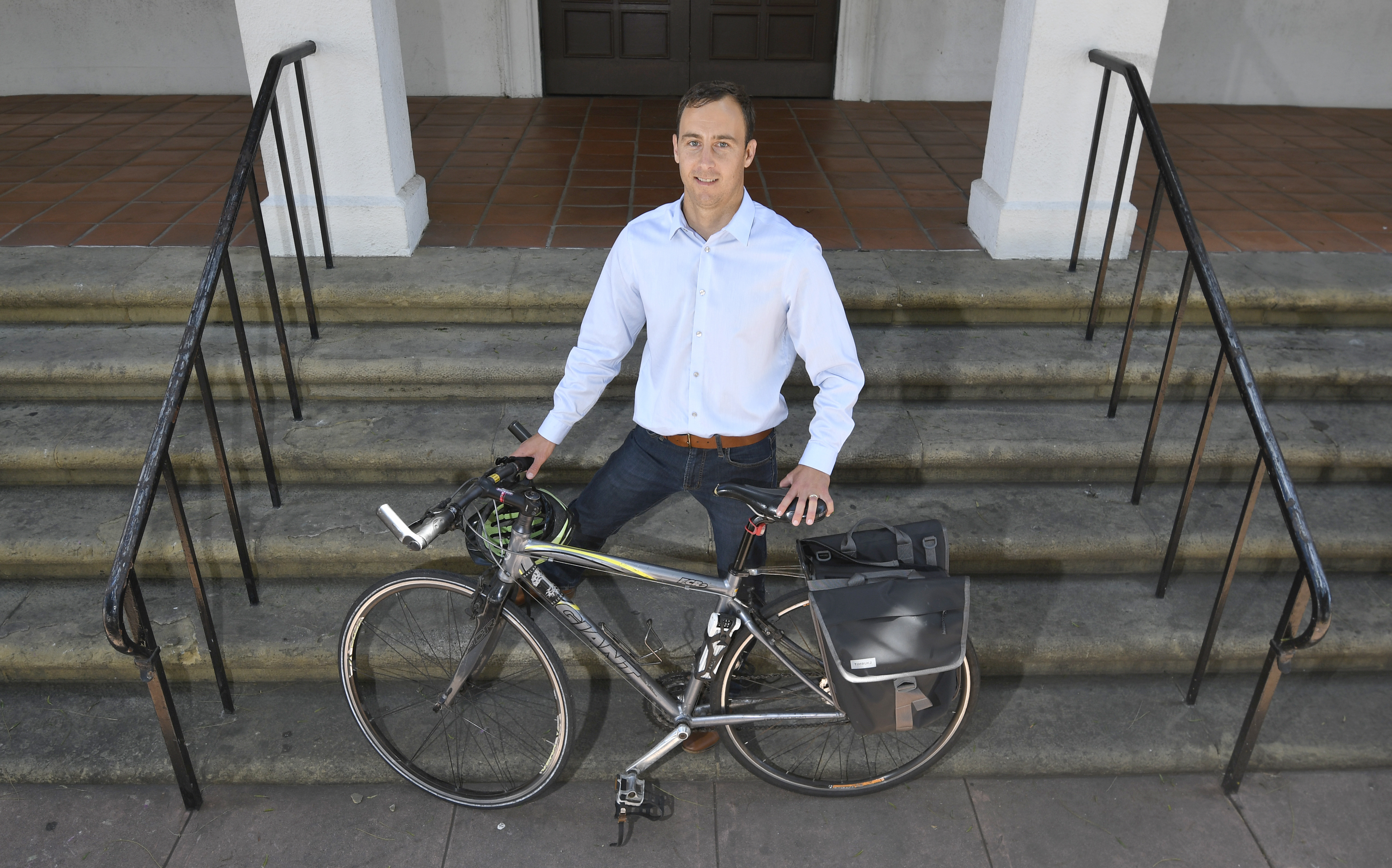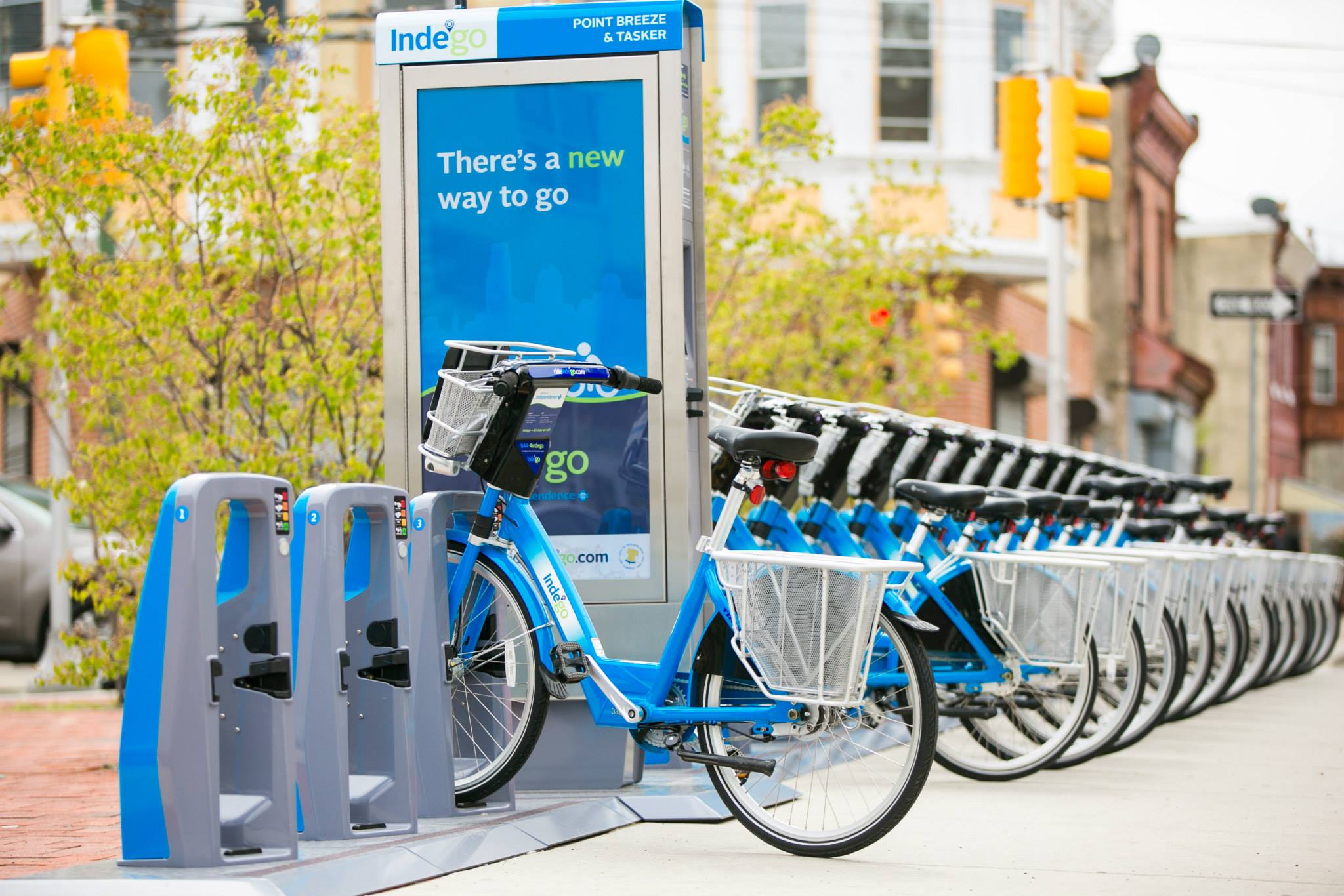UCSB Leads Charge for Santa Barbara Bike-Sharing
New Study Says Program Could Be Launched Within the Year

For years, Santa Barbara’s cadre of well-organized bicycle agitators dared only dream that a South Coast bike-share program might one day be possible. Now, the author of a just-released economic feasibility study on bike sharing estimates that UCSB might launch such a program within the year. “Things are moving so fast,” said study author Jack Ucciferri, that the results of his report, released only two weeks ago, might already be outdated.
Since 2007, bike-share programs have popped up in 119 American cities. In Santa Monica, a Hulu-sponsored commercial fleet of solidly built, bright-green utilitarian street bikes set up shop only 15 months ago and is already turning a profit. Like Uber, bike-share operations depend on GPS technology, credit cards, smart phones, and apps that alert users where the nearest bikes can be found. Commuters can join as members, pay a $25 monthly fee, and avail themselves of 90 minutes’ worth of bike-riding time a day. Nonmembers can use the bikes, as well, but the price tends to be higher.
In some cities, shared bikes — typically loudly colored and distinctively framed — are clustered around kiosks or bike stations, where they can be picked up and dropped off. (Computer chips embedded into the bicycle frames allow stolen or errant bikes to be tracked down.) But that model seems to be fading, and the bikes can be distributed anywhere within the “geo-spatial leash length” of a company’s service area. “We are seeing the rise of the ‘dockless’ approach,” said Eve Sanford of the Santa Barbara Bicycle Coalition. “You don’t need stations per se anymore, meaning the bikes can be fit into smaller spaces.”
This not only reduces the up-front capital costs needed to erect kiosks and stations, said Ucciferri, but it also minimizes permitting issues, particularly in cities like Santa Barbara, known for strict visual guidelines. Until about six months ago, Ucciferri said, most bike-share companies required a sizable subsidy just to set up shop, typically hundreds of thousands of dollars paid for by some government entity. That subsidy, he said, is becoming less necessary.
UCSB — eager to burnish its reputation for ecologically sensitive infrastructure — is about to solicit bids for a campus-wide bike-share program that would encompass Isla Vista, as well. Of the vendors that have already approached UCSB, at least two are expected to submit “no-cost” bids, meaning no governmental subsidy is needed. Typically, companies make money with sponsorships and advertising opportunities, coupled with membership fees and fare-box revenues.

According to Ucciferri, bike-share programs do best in densely populated communities with large numbers of young adults — ages 18-34 — known as “early adopters.” They also tend to be used more by those with enough means to use credit cards and less by low-income commuters. Although Santa Barbara might be on the small side of other bike-share communities, Ucciferri said it has the wealth, demographics, and densities needed to be economically sustainable.
In his study — sponsored by the Bicycle Coalition and funded by UCSB and Santa Barbara Community College — Ucciferri envisioned two major bike-share cores: One would emanate out from UCSB and eventually include Goleta; the other from City College and encompass much of downtown Santa Barbara. UCSB would start out with 10 stations at 100 bikes and grow to 50 and 500.
Every year, he said, tens of thousands of people visit the campus, where many destinations are “too far to walk and too short to drive.” For them, shared bikes would be ideal — likewise for faculty and campus staff. Less certain, he acknowledged, will be interest by UCSB students, famous for their use of throwaway cruisers and other beater bikes.
Downtown Santa Barbara would start with 10 stations and 100 bikes, he projected, reaching maximum build-out with 100 stations with 1,000 bikes. The start-up capital costs, he projected, would be $434,000; operating costs for year one would be $340,000. Expenses could exceed revenues to the tune of $90,000 until year four.
Eve Sanford with the Bicycle Coalition suggested the bikes be concentrated at the downtown transit center, the Amtrak station, and other places conducive to people trying to take either the first or last mile of their trip. With 25,000 tourists visiting the South Coast a day — and about 15,000 commuters arriving or departing — any shared bike operation would target those populations.
Mike Becker, a transportation planner with the Santa Barbara County Association of Governments (SBCAG), helped oversee the preparation of the report. He stressed the need for a South Coast regional operation. Some degree of governmental engagement, support, and involvement, he said would ultimately prove helpful in balancing local needs with market realities. Getting government to dance responsively to “start-up culture,” Ucciferri noted, could be a tricky proposition. The next step? “We’re looking for a champion,” said SBCAG’s Becker.
Ucciferri is running for City Council to represent the Sixth District against Councilmember Gregg Hart. Hart also works for SBCAG. Ucciferri, who has a global studies master’s from UCSB and is an owner of a vacation rental company that’s since been put out of business by the city’s ban, expressed cautious optimism that his candidacy will not adversely affect SBCAG’s response to bike sharing.



